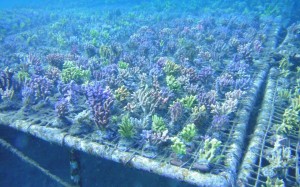 Last week we took a look at some wonderful maricultured mini-colonies of various Euphyllia species. Today we get a sneak peak into the most popular maricultured genus, Acropora. To produce the most colorful specimens of maricultured Acropora divers take fragments of wild colonies, place them in various farms, and see which one’s do best at particular depths and currents. Similar to aquaculture in captivity, once a coral has proven to color up well and grow at an acceptable pace the coral is fragmented again and eventually sold.
Last week we took a look at some wonderful maricultured mini-colonies of various Euphyllia species. Today we get a sneak peak into the most popular maricultured genus, Acropora. To produce the most colorful specimens of maricultured Acropora divers take fragments of wild colonies, place them in various farms, and see which one’s do best at particular depths and currents. Similar to aquaculture in captivity, once a coral has proven to color up well and grow at an acceptable pace the coral is fragmented again and eventually sold.
Lately many reefers have been intrigued by the wonderful smooth skinned “deepwater” Acropora, myself included. They come in a dizzying array of colors, although predominantly various shades of green/yellow.Their growth patterns are unlike any other Acropora making them desirable even to the most jaded aquarist. However, while they might prefer more indirect light than some of the super high light loving Acros, they’re certainly not grown in “deepwater”. Just like the “deepwater” zoanthid craze the term is a marketing technique. These corals are grown in depths ranging from 5-8 meters (~16-26 feet) alongside other Acropora species.
For best success reefers should cut the bases off of these corals when they’re received. This helps prevent unwanted algae and coral pests from making their way into a system. Make sure to dip thoroughly and slowly acclimate them to your lighting system. Many times maricultured colonies are kept under artificial lighting for a short period of time prior to export which helps them color up, and allows the farmer time to inspect the animals health. This is generally not sufficient time for the coral to fully adapt to captive conditions so some TLC on your end will go a long way with these beautiful animals.
Shout out and thanks to Endang Nilasari for sharing these pictures and information.


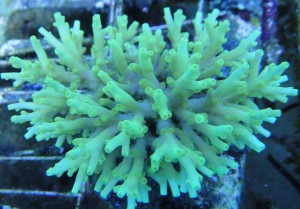
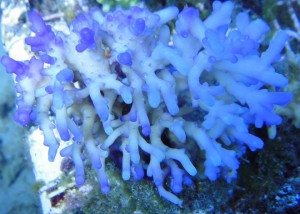

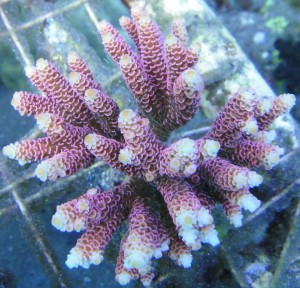

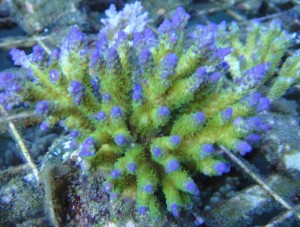








0 Comments